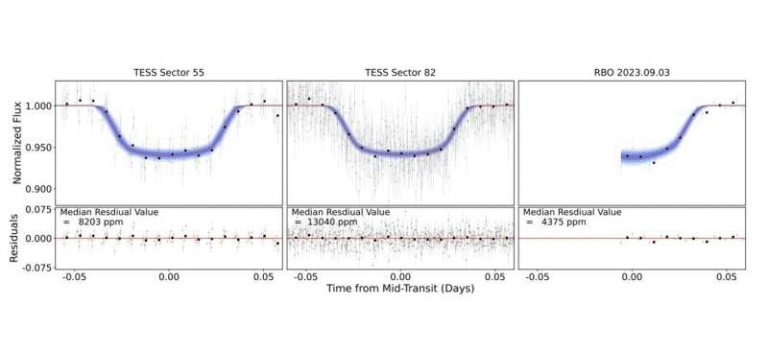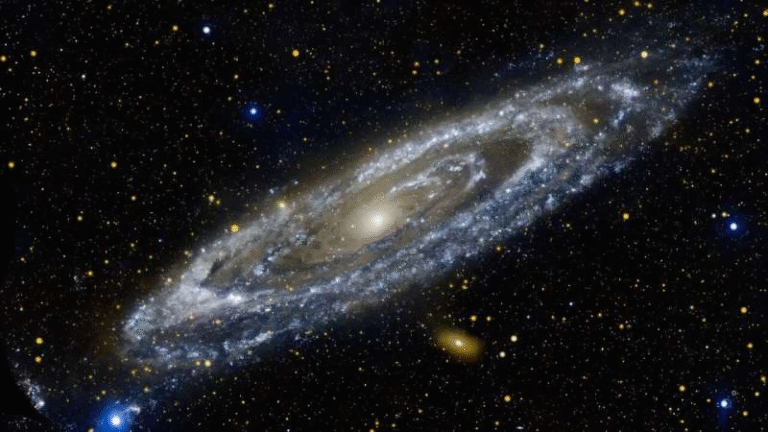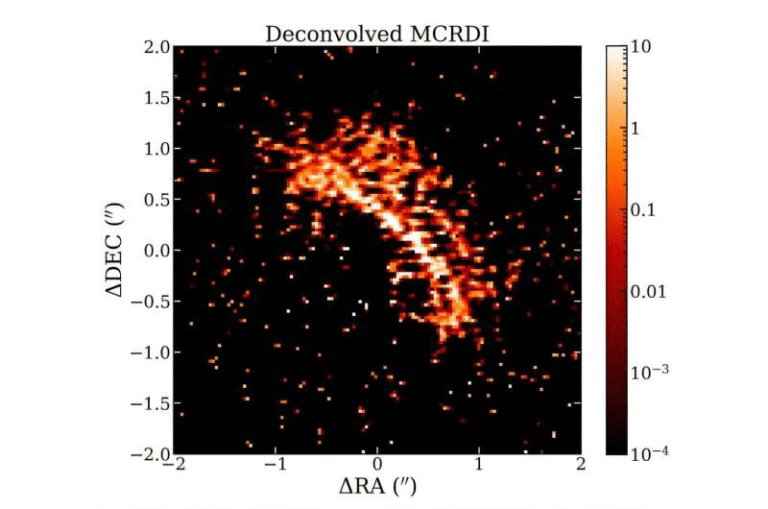Radiation May Be Creating Organic Molecules on Enceladus, Not Its Ocean
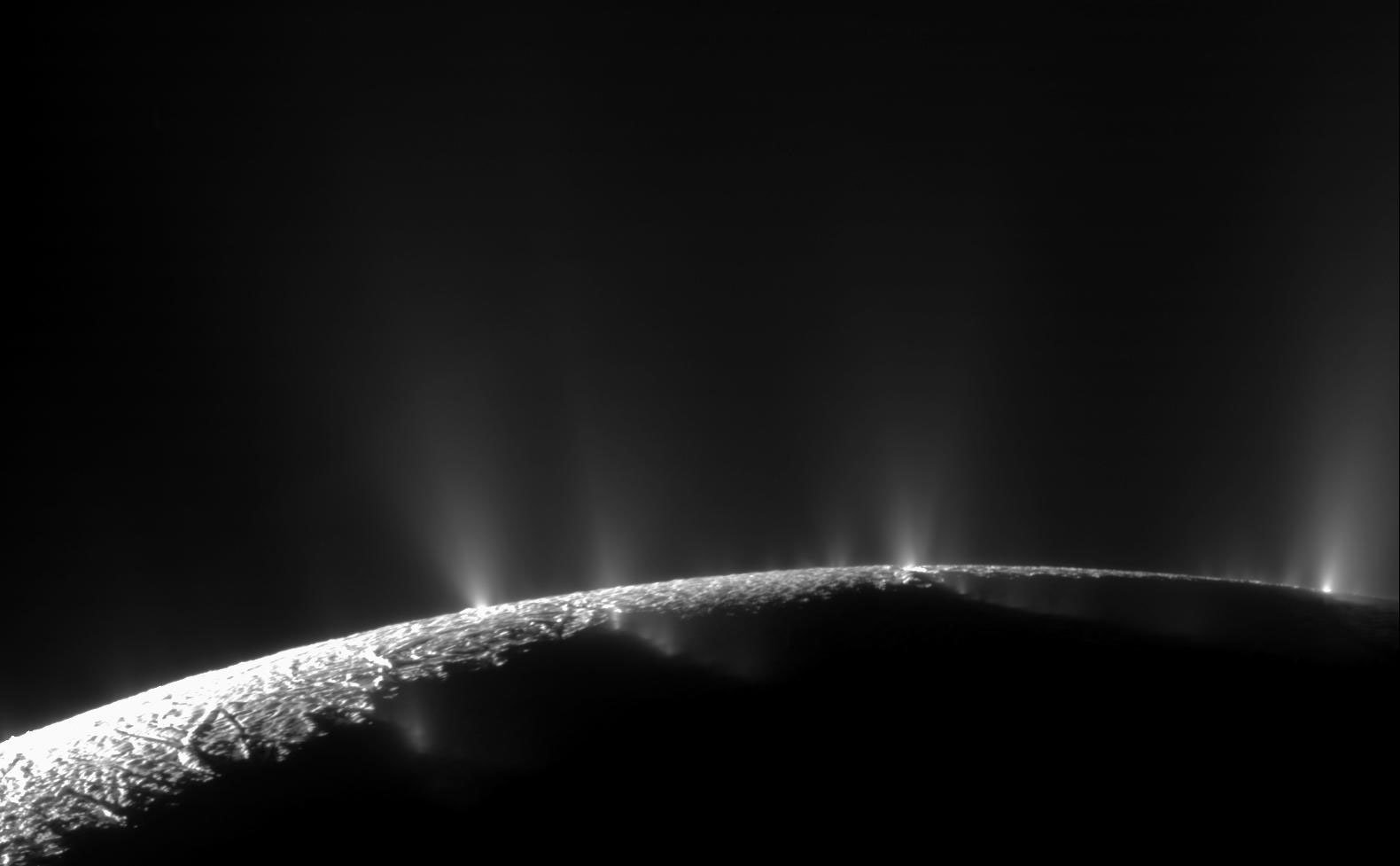
Saturn’s icy moon Enceladus has been one of the most exciting places in our solar system for astrobiologists. Ever since NASA’s Cassini spacecraft flew through its spectacular plumes in 2005 and detected water, salts, and organic molecules, scientists have been hopeful that these chemicals were clear signs of a hidden subsurface ocean that might be habitable. But a new study presented at the EPSC–DPS Joint Meeting 2025 in Helsinki has complicated this picture in a big way.
Researchers now suggest that many of the organic compounds found in Enceladus’s plumes may not come from its underground ocean at all. Instead, they could be formed on the surface ice itself, thanks to bombardment by radiation trapped in Saturn’s powerful magnetosphere. This discovery doesn’t close the door on Enceladus being habitable, but it does mean that the evidence needs to be interpreted much more cautiously.
How Scientists Tested This
A team led by Dr Grace Richards from the Istituto Nazionale di Astrofisica (INAF) in Rome set out to test whether radiation alone could create the kinds of organics that Cassini observed. To do this, they built ice analogues that mimic the conditions on Enceladus.
These analogues included water (H₂O), carbon dioxide (CO₂), methane (CH₄), and ammonia (NH₃), and were cooled down to –200 °C to match Enceladus’s frigid surface. They then bombarded this ice with water-group ions such as O⁺, O³⁺, OH⁺, and H₂O⁺ at energies between 10 and 45 keV. This simulates the energetic particles from Saturn’s magnetosphere that continuously strike Enceladus.
The team used infrared spectroscopy (FTIR) to track chemical changes as they happened in the irradiated ice. After the bombardment, they warmed the samples (a process called annealing) to see if even more complex molecules would emerge.
What the Experiments Produced
The results were surprising. In every single experiment, the irradiated ice generated carbon monoxide (CO), cyanate ion (OCN⁻), and ammonium (NH₄⁺). These are not just random chemicals—they are molecules that Cassini itself detected in the plumes or on the surface of Enceladus.
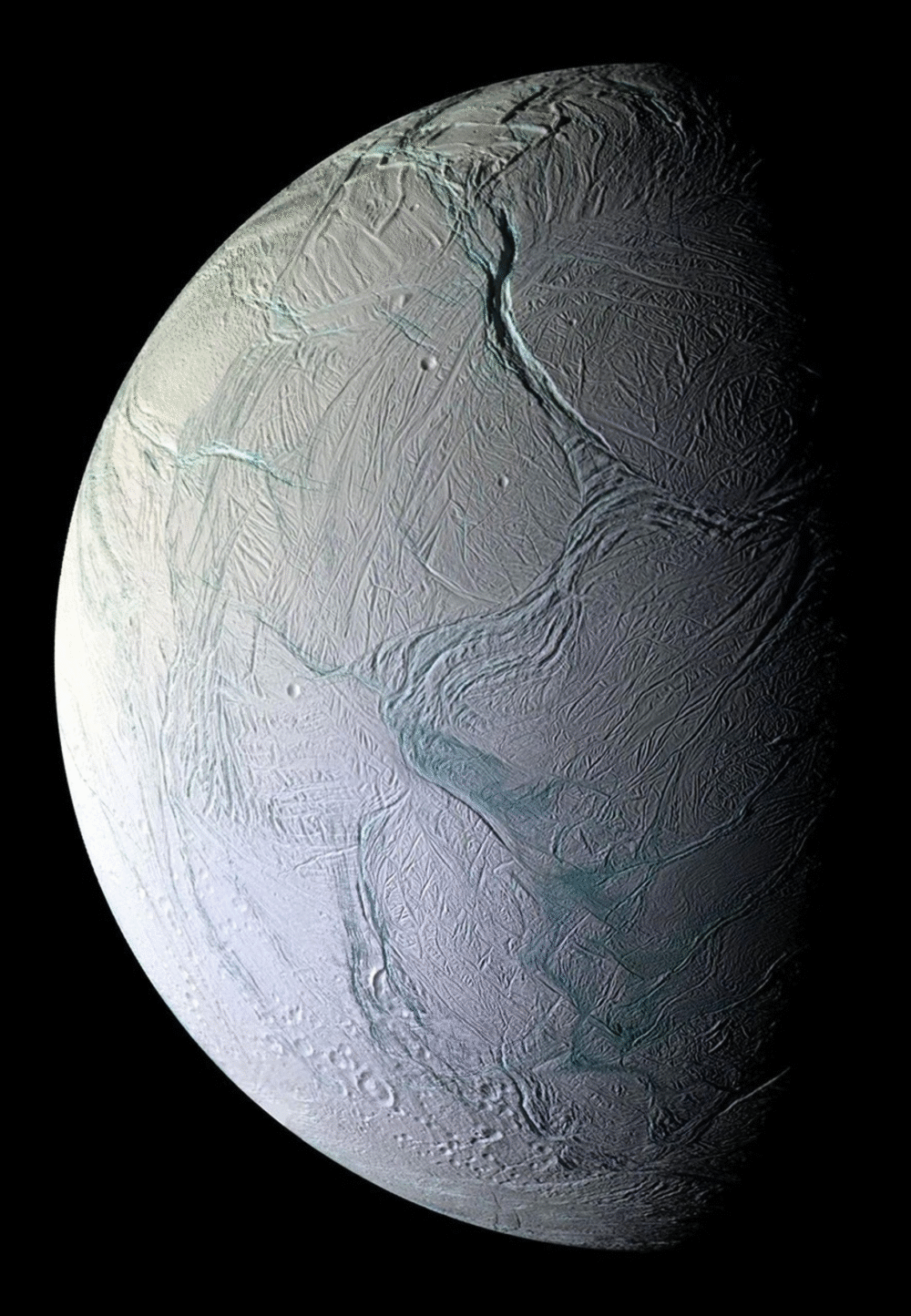
When the ice was warmed up, even more complex compounds appeared:
- Carbamic acid
- Ammonium carbamate
- An alcohol species (likely methanol or ethanol)
The team also tentatively identified other intriguing molecules, including acetylene, acetaldehyde, formamide, and hydroxymethyl radicals. These molecules are particularly interesting because they are considered prebiotic building blocks—the kinds of substances that can eventually lead to amino acids and proteins.
The experiments also showed that the timescales for these molecules to form under radiation are roughly the same as the timescales that Enceladus’s ice would be exposed on the surface or within the plumes. That means the chemistry seen in the lab is very realistic for the moon’s actual environment.
Why This Changes Things
For years, many scientists have assumed that the presence of organics in Enceladus’s plumes pointed directly to the subsurface ocean being active and chemically rich. Since water, salts, and organics are all essential ingredients for life, this seemed like a major astrobiological jackpot.
But this new research shows that radiation-driven chemistry on the icy surface could be producing many of the same molecules—without the ocean being involved at all. That means some of what we thought were signs of a potentially habitable ocean might just be surface-level chemistry caused by radiation.
This does not mean that Enceladus is lifeless or uninteresting. The subsurface ocean still exists, and tidal heating from Saturn’s gravity still makes it liquid. But it does mean we have to be very careful about assuming that organics in the plumes automatically come from the ocean.
The Challenge Ahead
The big challenge for planetary scientists now is figuring out how to distinguish between ocean-derived organics and radiation-produced ones. This will not be easy. Both types of chemistry can produce overlapping sets of molecules, and both can deposit them in the plumes or onto the icy surface.
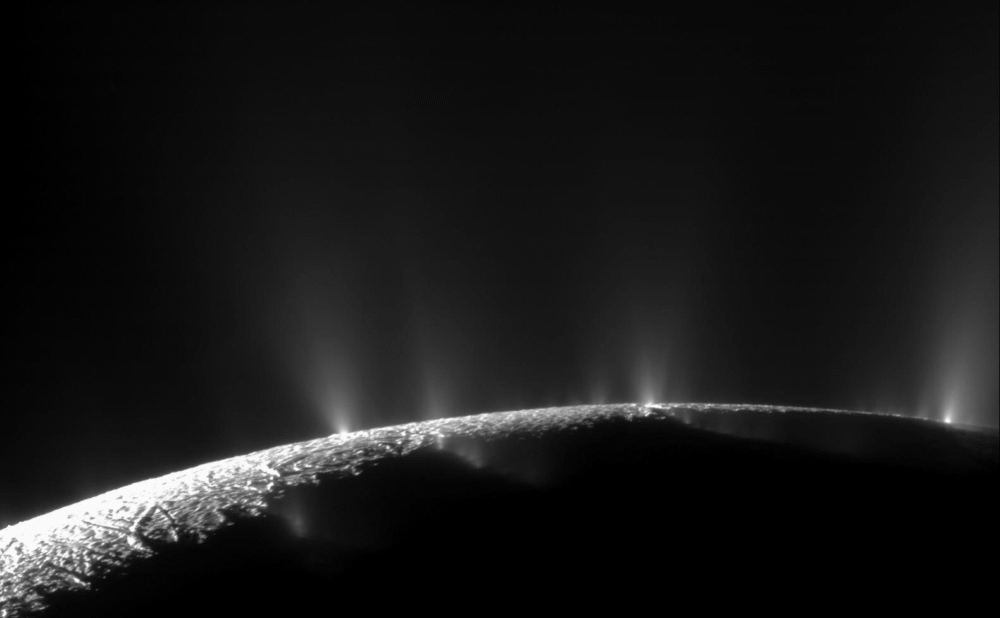
Future space missions will need to design instruments capable of identifying subtle chemical signatures that point to either ocean chemistry or surface radiolysis. Understanding this distinction is absolutely crucial if we want to assess Enceladus’s true habitability.
One possibility is that upcoming mission proposals—such as a dedicated Enceladus mission being considered under ESA’s Voyage 2050 program—will be able to collect better samples, use higher-resolution mass spectrometry, or land on the surface to directly analyze ice in different environments.
A Quick Refresher: Cassini’s Discoveries
The excitement around Enceladus began with Cassini’s discovery in 2005. The spacecraft observed giant plumes erupting from fractures near the moon’s south pole, nicknamed “tiger stripes.” These geysers are powered by Saturn’s tidal forces, which stretch and flex Enceladus, generating enough heat to keep liquid water beneath the surface.
Cassini not only imaged these plumes but also flew through them. Its instruments found water vapor, ice grains, salts, and complex organic molecules. Since these compounds can act as precursors to prebiotic chemistry, the discovery instantly made Enceladus one of the top candidates for life in the solar system.
Until now, the assumption was that all of this material originated in the subsurface ocean. This new study adds a new twist by showing that surface radiation chemistry could be creating similar molecules right at the icy crust.
Why Saturn’s Radiation Environment Matters
Enceladus is embedded in Saturn’s strong magnetosphere, which traps charged particles. These particles—ions and electrons—constantly rain down on the moon’s icy surface.
Over time, this bombardment can break apart simple molecules and rearrange them into more complex organics. This process, known as radiolysis, is already well studied in other icy contexts, such as Jupiter’s moon Europa. The fact that it can happen on Enceladus too isn’t surprising, but this new study is the first to show in detail how it could mimic ocean chemistry in the plumes.
Broader Implications for the Search for Life
The lessons from Enceladus extend to other icy moons as well. For example, Europa, Ganymede, and even Neptune’s moon Triton all have icy surfaces exposed to radiation. If radiation alone can generate complex organics, then scientists need to be cautious when interpreting chemical data from these places.
It also means that habitability studies will require even more careful mission design. Sampling a plume, surface frost, or shallow ice may not be enough to confirm the presence of life-friendly chemistry. Future missions may need to drill deeper, capture material directly from the ocean, or study isotopic ratios that radiation cannot easily mimic.
What This Means Going Forward
This study doesn’t reduce the importance of Enceladus—it actually makes it more fascinating. Instead of a simple story where organics automatically equal ocean life potential, we now have a more complex and scientifically rich puzzle.
The good news is that the experiments replicated molecules Cassini already detected, which means the models are grounded in real-world data. The bad news is that it will be much harder to untangle the sources of these molecules without new missions.
In short: Enceladus still has a hidden ocean, it still has geysers spewing water and organics into space, and it’s still a prime target in the search for life. But now we have to admit that surface radiation chemistry might be muddying the signal.
Final Thoughts
The study by Grace Richards and her colleagues shows the importance of laboratory simulations in planetary science. Without experiments like these, it would be easy to misinterpret spacecraft data and jump to conclusions about habitability.
For Enceladus, the next steps will involve combining lab experiments, modeling, and future missions to piece together a more complete picture. If we can successfully separate the radiation fingerprints from the ocean fingerprints, we’ll be one step closer to knowing whether this icy moon could truly harbor life.
Reference:
Water-Group Ion Irradiation Studies of Enceladus Surface Analogues – EPSC–DPS Joint Meeting 2025

